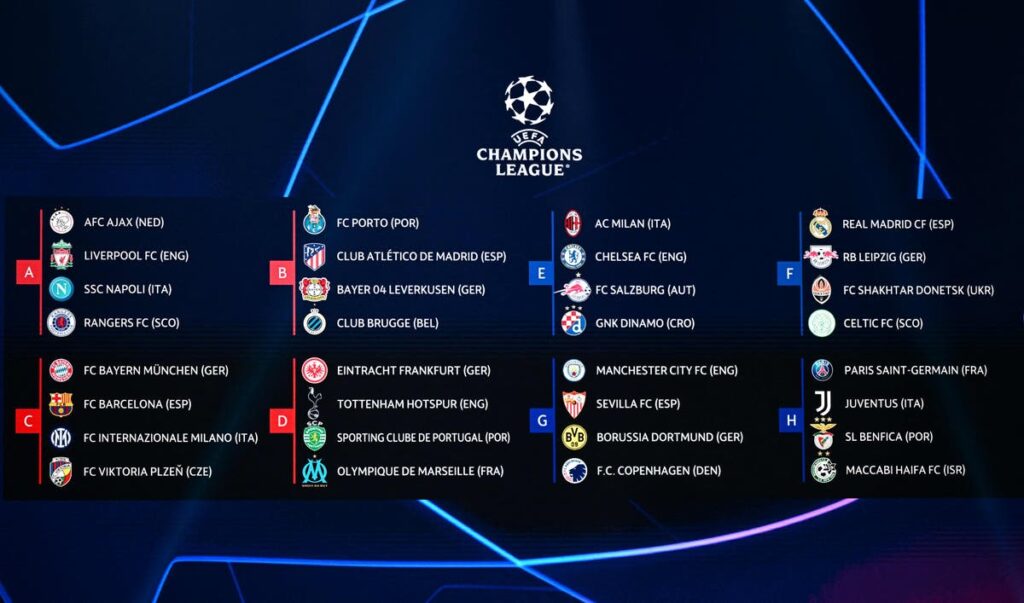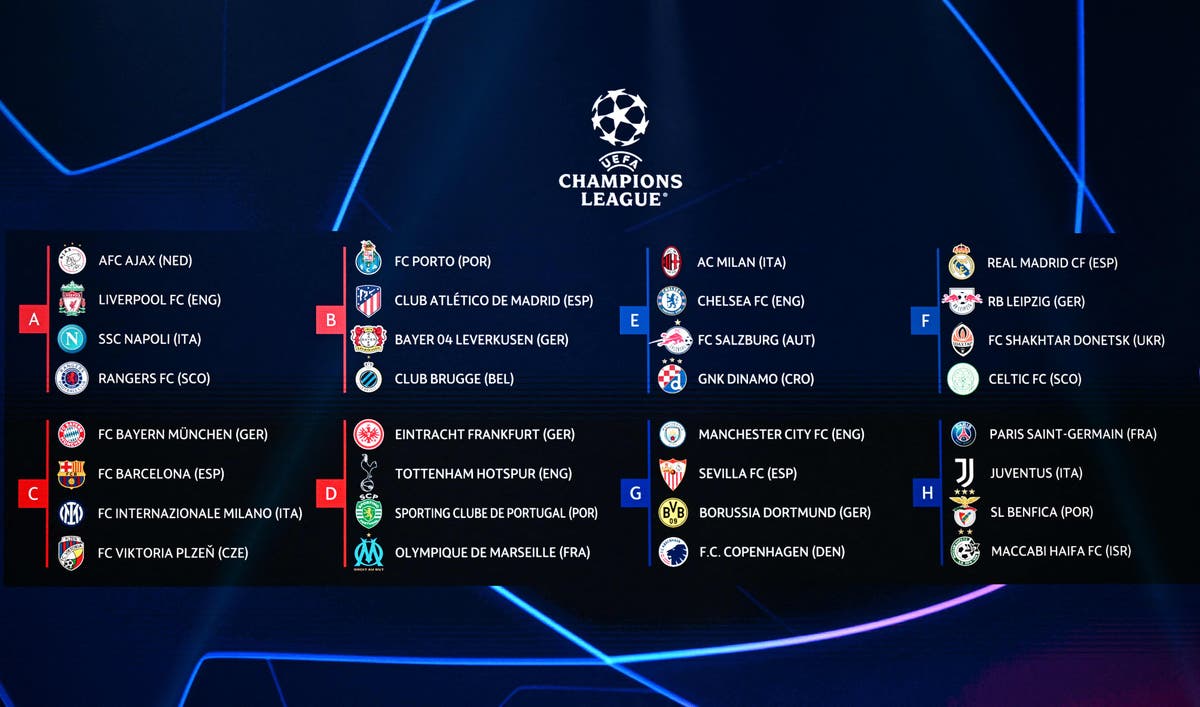
Champions League Group Stage Standings: A Comprehensive Analysis
The UEFA Champions League (UCL) group stage is a thrilling spectacle, pitting Europe’s elite clubs against each other in a battle for supremacy and a coveted spot in the knockout rounds. Understanding the Champions League group stage standings is crucial for fans, analysts, and even casual observers to grasp the dynamics of the competition. This article provides a comprehensive analysis of what goes into determining the Champions League group stage standings, highlighting key tie-breakers, notable historical outcomes, and offering insights into the current season’s battles.
Understanding the Basics of Champions League Group Stage Standings
The Champions League group stage standings are determined by a points system. Each team plays the other three teams in their group twice, once at home and once away, resulting in a total of six matches per team. The points are awarded as follows:
- Win: 3 points
- Draw: 1 point
- Loss: 0 points
At the end of the group stage, the top two teams in each group advance to the Round of 16. The team finishing third enters the UEFA Europa League knockout round play-offs. The team finishing fourth is eliminated from European competition for the season.
Key Tie-Breakers in Champions League Group Stage Standings
With teams often finishing the group stage with the same number of points, UEFA employs a series of tie-breakers to determine the final Champions League group stage standings. These tie-breakers are applied in the following order:
Head-to-Head Points
The first tie-breaker is the number of points obtained in the head-to-head matches among the teams in question. This means that if two teams are tied on overall points, the team with more points in their direct encounters will be ranked higher.
Head-to-Head Goal Difference
If teams remain tied after considering head-to-head points, the next tie-breaker is the goal difference from the head-to-head matches. A superior goal difference in these games will give a team the advantage.
Head-to-Head Goals Scored
If the head-to-head goal difference is also tied, the team that scored more goals in the head-to-head matches will be ranked higher. This rewards attacking prowess in the direct encounters.
Head-to-Head Away Goals Scored
For matches played during or before the 2018-19 season only, if the teams were still tied, the number of goals scored away from home in the head-to-head matches was used as a tie-breaker. This rule was removed subsequently.
Overall Goal Difference
If the teams remain tied after applying the head-to-head criteria, the overall goal difference in all group matches is considered. A better overall goal difference reflects a team’s consistent performance throughout the group stage.
Overall Goals Scored
If the overall goal difference is also tied, the team that scored more goals in all group matches is ranked higher. This rewards a team’s overall attacking performance.
Overall Away Goals Scored
Similar to the head-to-head away goals scored tie-breaker, if the teams were still tied, the number of goals scored away from home in the group stage was used as a tie-breaker. This rule was also removed subsequently.
Disciplinary Points
If the teams are still tied after all the above criteria, UEFA considers the disciplinary record of the teams. Fewer disciplinary points (calculated based on yellow and red cards received) give a team the advantage. This promotes fair play and discipline.
UEFA Club Coefficient
As a last resort, if all other tie-breakers fail to separate the teams, UEFA uses the club coefficient, which is based on the club’s performance in European competitions over the past five seasons. A higher coefficient indicates a stronger historical performance.
Historical Examples of Dramatic Champions League Group Stage Standings
The Champions League group stage standings have been the stage for numerous dramatic finishes and unexpected outcomes. Here are a few notable examples:
- 2003-04 Group C: A thrilling three-way tie between Deportivo La Coruña, AS Monaco, and PSV Eindhoven saw Deportivo top the group due to their head-to-head record. Monaco, who eventually reached the final, finished second.
- 2009-10 Group C: Manchester United topped the group, but behind them, a tight battle between CSKA Moscow, Wolfsburg and Besiktas saw CSKA Moscow advance to the next round.
- 2011-12 Group E: Chelsea, the eventual champions, only managed to finish top of their group ahead of Bayer Leverkusen on head-to-head record after both teams finished on 11 points.
- 2012-13 Group H: Manchester United finished top of their group, but a fierce battle for second saw CFR Cluj edge out Galatasaray based on head-to-head results.
Analyzing Current Season’s Champions League Group Stage Battles
As the current season unfolds, the Champions League group stage standings are constantly evolving. Several groups are already showcasing intense competition and potential for dramatic finishes. To stay updated, fans and analysts closely monitor each match, paying attention to not only the scores but also the underlying statistics that can impact the tie-breakers. Examining factors such as goal difference, head-to-head records, and disciplinary records can provide valuable insights into which teams are best positioned to advance.
For example, consider a hypothetical group where two teams are tied on points with one match remaining. Analyzing their previous head-to-head encounter can reveal which team has the advantage. If one team won the first match 2-1, the other team would need to win the return fixture by at least two goals to secure a better head-to-head record and potentially top the group.
The Impact of Champions League Group Stage Standings on the Knockout Rounds
The final Champions League group stage standings have a significant impact on the knockout rounds. The group winners are seeded and drawn against the runners-up from other groups. This often results in group winners facing theoretically weaker opponents in the Round of 16, giving them a better chance of progressing further in the competition. Furthermore, group winners get the advantage of playing the second leg of their Round of 16 tie at home, which can be a crucial factor in determining the outcome.
Teams finishing third and entering the Europa League also have a significant impact on that competition. These teams often bolster the strength of the Europa League knockout rounds, creating more competitive and exciting matches. [See also: Europa League Knockout Stage Preview]
Strategies for Teams Aiming to Top the Champions League Group Stage Standings
Topping the Champions League group stage standings requires a combination of tactical prowess, squad depth, and a bit of luck. Teams often adopt specific strategies to maximize their chances of success. Some common strategies include:
- Prioritizing Home Games: Securing maximum points at home is crucial, as these matches provide a significant advantage.
- Targeting Head-to-Head Matches: Focusing on winning head-to-head matches against key rivals can be decisive in determining the final standings.
- Managing Squad Rotation: Balancing the need to rest key players with the importance of winning matches requires careful squad management.
- Maintaining Discipline: Avoiding unnecessary yellow and red cards can prevent suspensions and maintain a strong squad for crucial matches.
Conclusion
The Champions League group stage standings are more than just a table of points. They represent the culmination of tactical battles, individual brilliance, and strategic planning. Understanding the intricacies of the tie-breakers and the historical context of the competition can enhance the viewing experience and provide valuable insights into the dynamics of European football. As the current season progresses, keep a close eye on the Champions League group stage standings to witness the drama and excitement unfold.
From the dramatic finishes to the strategic nuances, the quest for a favorable position in the Champions League group stage standings is a captivating journey. Whether you are a seasoned analyst or a casual fan, understanding the factors that determine these standings will undoubtedly enrich your appreciation of the beautiful game. So, as the teams battle it out on the pitch, remember that every point, every goal, and every card can have a profound impact on the final Champions League group stage standings and the fate of Europe’s elite clubs.
Ultimately, the Champions League group stage standings are a testament to the competitive spirit of European football, where only the strongest and most strategically astute teams can rise to the top. Keep following the action, and you’ll be sure to witness some unforgettable moments. The final Champions League group stage standings will undoubtedly set the stage for an exciting knockout phase.
